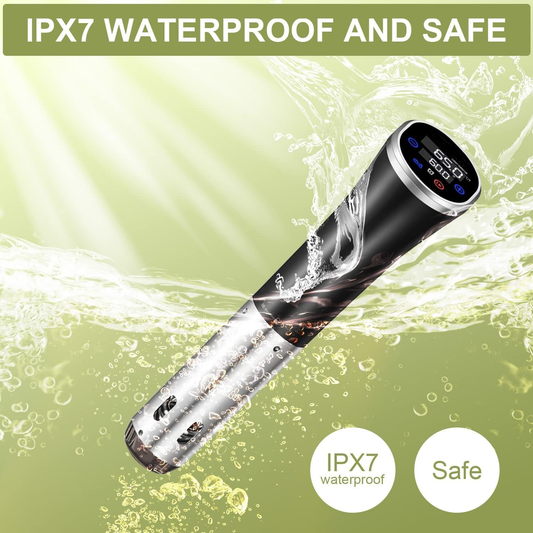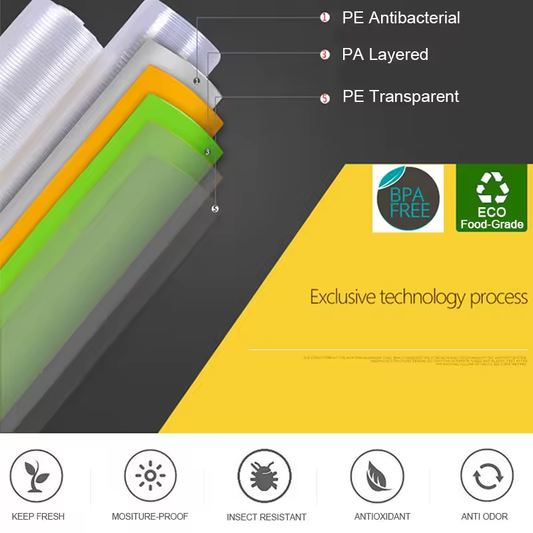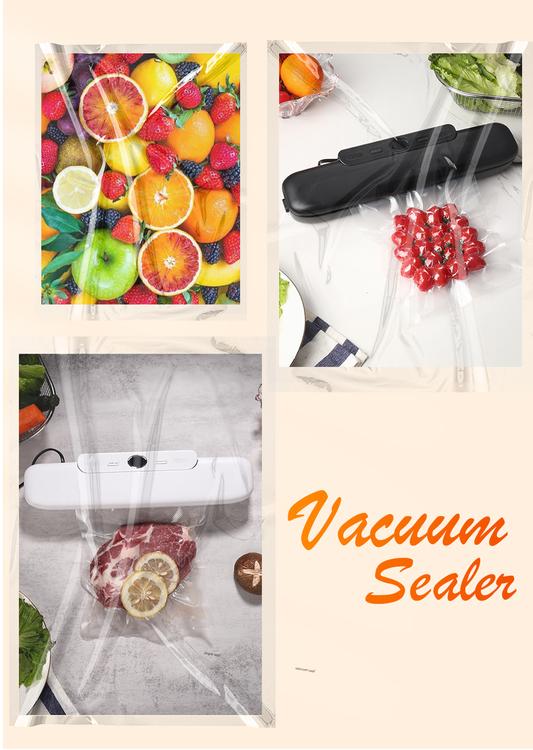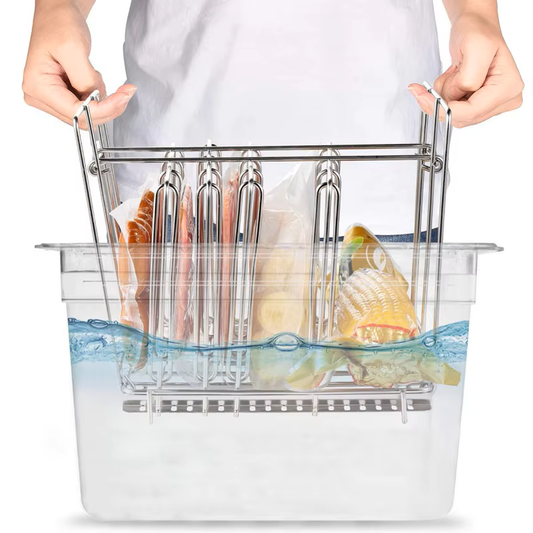 Sous vide literally translates from French as ‘under vacuum.’ It was developed in France in the early 1970s when George Pralus and a food scientist joined forces to devise the perfect method for producing foie gras. After numerous experiments the best method proved to be sealing the food in a pouch under vacuum before cooking it very slowly at a controlled temperature.
Sous vide literally translates from French as ‘under vacuum.’ It was developed in France in the early 1970s when George Pralus and a food scientist joined forces to devise the perfect method for producing foie gras. After numerous experiments the best method proved to be sealing the food in a pouch under vacuum before cooking it very slowly at a controlled temperature.Collection: Sous-vide ovens and everything related to them For Kitchen & Home
What is Sous Vide?
 Sous vide literally translates from French as ‘under vacuum.’ It was developed in France in the early 1970s when George Pralus and a food scientist joined forces to devise the perfect method for producing foie gras. After numerous experiments the best method proved to be sealing the food in a pouch under vacuum before cooking it very slowly at a controlled temperature.
Sous vide literally translates from French as ‘under vacuum.’ It was developed in France in the early 1970s when George Pralus and a food scientist joined forces to devise the perfect method for producing foie gras. After numerous experiments the best method proved to be sealing the food in a pouch under vacuum before cooking it very slowly at a controlled temperature.Sous-vide today uses a water bath to accurately cook the vacuum packed item at a precise temperature. This creates enhanced texture and taste and means that meats such as beef emerge tender enough to be cut with a fork. This process results in minimal shrinkage, with greater yield. Wastage is reduced through accurate portion control at regen stage. This is why so many acclaimed chefs worldwide, including many with coveted Michelin stars use sous vide equipment.
Direct or Indirect Cooking
Direct cooking is the term given to food items which are prepared for immediate consumption. Indirect is the term which is used for food which is cooked, chilled, stored in chilled conditions for subsequent regeneration.
Bigger capacity unstirred baths are commonly used for mis en place or indirect cooking. For direct cooking (immediate consumption) chefs sometimes prefer the smaller capacities placed on each relevant section e.g. sauce, fish, pastry.
Immersed or Vacuum Packs
SFood can be cooked directly in liquid rather than in a vacuum pack. For example, a portion of food is placed directly in oil and not vacuum packed. Vegetable oil can be flavored with vanilla bean, star anise, or something similar. Some cooks cook food in a container filled with broth, such as chicken, vegetables, etc. However, the most common process is to place the food in a vacuum pack and cook it, creating a dish mise en place or cooking it directly.
What is molecular gastronomy?
A concept originally introduced in the 1980s, molecular gastronomy recognises the correlation between science and cookery. ‘Slow cooking’ is an important part of molecular gastronomy, due to the excellent flavours and textures which result.

-
BPA-free Food Vacuum Roll Bags for Sous Vide Cook Storage Packaging bag for Vacuum Sealer Meat Fruits Vegetables 500cm/Rolls
Regular price From $7.99 USDRegular priceUnit price / per$17.99 USDSale price From $7.99 USDSale -
Machine Food Vacuum Sealer With Free 10pcs Vacuum bags Household Vacuum Food Sealing
Regular price $39.99 USDRegular priceUnit price / per$75.00 USDSale price $39.99 USDSale -
Sous Vide Cooker Container With two Sizes 6L
Regular price $48.99 USDRegular priceUnit price / per$55.00 USDSale price $48.99 USDSale -

 Sale
SaleSous Vide Cooker
Regular price From $109.99 USDRegular priceUnit price / per$300.00 USDSale price From $109.99 USDSale







